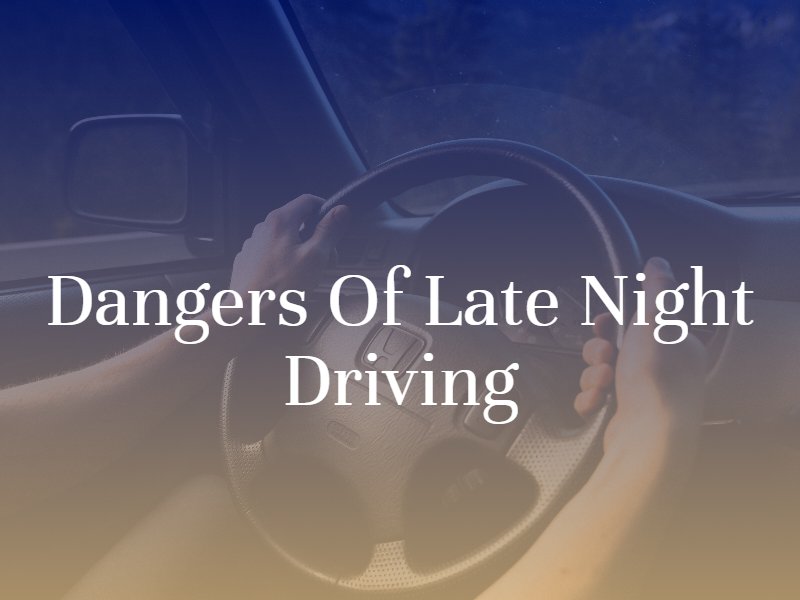
What Are the Dangers of Late Night Driving?
Colburn Law
Posted in Car Accidents,Safety Tips on December 1, 2020

After a car accident, we often assume that negligent behaviors caused the crash: drinking and driving, running a red light, failure to yield, and so on. However, multiple factors can contribute to a collision, including poor road conditions, inclement weather, and low visibility, especially at night. In fact, driving late at night can increase the risk of an accident due to a combination of driving behaviors and poor conditions.
Is It Safer to Drive at Night or During the Daytime?
According to data from the National Highway Traffic Safety Administration (NHTSA), driving at night is more dangerous than driving during the daytime, especially on weekends. The National Safety Council’s (NSC) analysis of the NHTSA’s crash fatality reports shows that fatal accidents often peak on Saturday nights and occur more frequently on the weekends.
During 2018, NHTSA data revealed the following statistics about United States car accidents.
- Nonfatal crashes peak on Fridays and tend to occur more frequently on weekdays.
- The average peak time of day for both nonfatal and fatal accidents was between 4pm to 7:59pm, but this statistic varied throughout the year.
- During the spring and summer, fatal crashes peaked between 8pm and 11:59pm on average.
- Between October and March, fatal crashes peaked between 4pm and 7:59pm.
The Role of Late Night Visibility & Car Accidents
Low visibility plays a role in many late-night driving accidents; darkness can affect depth perception, color recognition, and peripheral vision, which can lead drivers to commit errors and cause accidents. Although fatal crashes in the fall, winter, and early spring did not peak during the later hours as seen in spring and summer, compromised visibility could have still contributed to these accidents. The end of Daylight Saving Time in the fall leads to shorter days, and more people find themselves driving in the dark, especially during peak rush hour periods.
Aside from low visibility, driving at night carries several risks. Drivers are more likely to suffer fatigue late at night than during the daytime. Falling asleep or drifting off behind the wheel, even for a second or two, can lead to serious accidents. Fatigued driving also impairs concentration, motor skills, and reaction time, which can also cause collisions.
Impaired driving is also more likely to occur late at night than during the day, especially on the weekends or during holidays. According to the NHTSA, 55% of drivers involved in motor vehicle fatalities between midnight to 3am were under the influence of alcohol. In addition, drivers under the influence of marijuana have increased 48% since 2007.
More: Common Environment Related Factors in Accidents
How Can Drivers Reduce Their Risk of a Crash at Night?
Whether for travel or while acting as a designated driver for a group of friends, driving late at night is sometimes unavoidable. If you find yourself on the road, you can take the following steps to protect yourself from an accident.
- Ensure you receive a full night’s sleep and do not get behind the wheel while drowsy.
- Stay vigilant for pedestrians and cyclists that are hard to spot at night.
- Ensure your headlights are clean and aim them in the correct direction.
- If someone is approaching you with headlights, do not look directly into them. Instead, look at the right hand side of the road and drive as far to the right as possible.
- If you feel disoriented after looking into another person’s headlights, pull over in a safe location until you feel ready to drive.
Late night collisions can still occur even if you take the correct safety precautions. Many drivers commit negligent, dangerous acts while on the road. To ensure you receive the justice you deserve, contact a Seattle personal injury lawyer as soon as possible after your accident to discuss your next steps.



